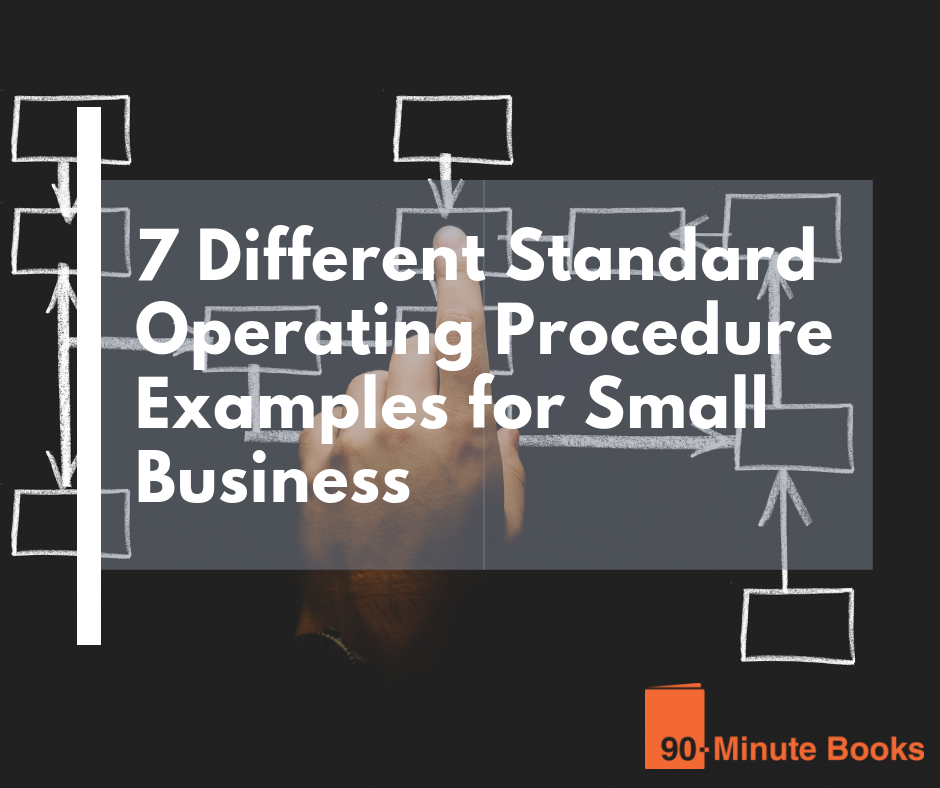What is the primary goal of any digital marketing campaign?
Results. All successful marketers aim to achieve the desired result by having more people click on ads or boosting sales.
The problem? You don’t always get the results you want. At times, marketing does not work out, and your financial investment in advertising does not bring any beneficial outcomes.
Wouldn’t it be great if you only had to pay for campaigns that were successful? Would you only pay when a strategy achieved the outcomes you desired?
It is conceivable that you could attempt performance-based marketing.
What Is Performance-Based Marketing?
Performance marketing is essentially “results-based” marketing. Instead of paying for marketing services following a set schedule (on a monthly or yearly basis), you’ll only have to spend money when you achieve the desired outcomes. What kind of results are we talking about, though? Well, the result could be anything measurable, including:- app installs
- ad views
- page clicks
- demo downloads
- ad clicks
- social media engagement
- sales
What Are the Benefits of Performance-Based Marketing?
That’s how performance-based marketing works. Is it worth exploring, though? Maybe. These are four benefits marketers and businesses receive from utilizing results-based marketing.Simplified Measurements
Performance marketing has the wonderful attribute of being able to be tracked and measured.- Marketing experts can quickly evaluate key metrics to measure campaign success. They can optimize their strategy based on tangible results.
- If business owners know how to interpret the data, they can use the results to decide where to focus their marketing efforts.
Improved Insights
Outcomes-oriented marketing offers a complete overview of how your marketing tactics are functioning at a precise point. For example, you can track:- sales funnel progress
- social media ad performance
- CTA engagement
Lower Risks
From a business point of view, performance marketing has a lower financial risk than other marketing strategies. You can make sound decisions with factual information, which boosts the possibilities for successful promotional campaigns, among other things. Additionally, you can raise your return on investment in the long run since you won’t expend money on an unsuccessful venture.Increased Transparency
Performance-based marketing has clear advantages, especially regarding visibility from both the company’s and the customer’s perspectives.- As a marketer, you know your objectives. You know exactly what you must do to get results for your client, so you’re more likely to meet their expectations.
- You benefit from clear, transparent payment terms if you’re a business owner. Unless you get the desired results, you don’t spend a dollar.
What Are the Cons of Performance-Based Marketing?
Clearly, results-based marketing has some great plus points. Although there are positive aspects, similar to other marketing tactics, there are some drawbacks.You Might Forget Your Priorities
Performance marketing is all about fast results. If you are preoccupied with short-term ambitions, such as getting more viewers or ad clicks, it can be effortless to ignore your long-term business aspirations. You could potentially achieve a rapid investment return if you successfully execute a performance-based campaign. Nevertheless, it is unlikely to lead to sustained business success unless you focus on the bigger picture.There’s a Higher Risk of Fraud
Sometimes, the methods employed in performance-based marketing can create a false sense of fast success. Put another way, the threat of deceptive advertising is greater. For example, some unethical marketing companies might use bots. These bots execute clicks on advertisements that create bogus traffic or counterfeit impressions.Delayed Results Can Cause Problems
Your entire marketing plan is undermined if you aren’t receiving the information required. It is possible that your money is being spent without the expected outcome being realized in the expected time, meaning your funds are being squandered.Should I Use Performance-Based Marketing?
Are you uncertain if using performance-based marketing would be suitable for your business? There are various methods to see if this approach suits your brand objectives. Let’s break them down.Can You Afford Performance-Based Marketing
Think about your marketing budget and your financial capacities before agreeing to use performance-based marketing. Your investment carries a certain amount of economic risk, and if you are a startup, it may be more beneficial for you to utilize free marketing tactics.Your Company Has a Solid Digital Presence
Performance-dependent marketing may not be suitable if you attempt to create an online reputation for your brand. Why? Well, you’re relying on people taking specific actions. If you don’t already have a big digital reputation, it’s unlikely that you’ll get enough folks to take action, such as downloading the app, to make performance marketing successful. It would be more beneficial for you to concentrate on approaches that enhance your company’s visibility.You Understand the Technicalities Involved
You only pay for results. Sounds simple, right? You need to know the technical aspects required to attain those results. Unless you cannot effectively utilize the data you obtain without the skill to assemble information from various origins, such as influencer marketing, sponsored advertisements, and website visits.Your Company Needs Results Fast
Do you require prompt, quantifiable results from one promotional effort? Then performance-based marketing might work for your company. For instance, if you intend to launch a campaign that quickly spreads or attempt to evaluate a few versions of the same advertisement. Performance marketing gives the exact, current info required to make shrewd business selections.Top Performance Marketing Channels
Let’s think about the top methods that make performance marketing techniques work properly after we went through the fundamentals of performance marketing and its commercial advantages. It is important to remember that the distinctions between these categories can be fluid (for example, native advertising could be classified as either social media advertising or sponsored content).Native Advertising
Advertising created from a local source is comparable to what is occasionally termed “advertorial.” That is advertising content that mimics editorial content. Content in the form of a video, article, or editorial is presented in a way that prevents consumers from knowing that it’s actually a form of advertising. Native advertising goes beyond what is created with advertorial content by taking on the original sound and design of the channel or platform in which it is displayed. Ads specifically created for particular social media websites, such as Facebook and Instagram, can be seen. These performance marketing platforms look like typical social postings and fit nicely with a user’s feed.Sponsored Content
A brand pays a publisher for access to distribute higher-quality content. Sponsored content that is effective should resemble the publisher’s own material, although the difference between content for marketing purposes and editorial content is usually more apparent to astute viewers. For instance, to separate it from the maker’s own material, it commonly contains a statement like “backed by,” “presented by,” “paid post,” or “powered by”. Although there is controversy surrounding sponsored content, it can be a powerful tool for getting people interested if the content resonates with the same viewers the publisher has. Content that originates from a trusted source and has been inspected to ensure the material is of educational value to the audience and not excessively promoting a product or service can be seen as more dependable than traditional marketing content.Social Media Advertising
Social media has resemblances to the traditional forms of marketing a brand. An online network such as Facebook or Twitter offers promoted adverts for a selection of people who utilize the service. Despite their more complex targeting capabilities, social media is still prone to the same problems as the traditional “spray-and-pray” approach when it comes to obtaining a broad audience and seeing tangible action based on the message, as well as measuring its success. Contrarily, social media platforms allow companies to communicate with customers with extremely detailed qualities, including age, psychological preferences, geographic location and habits. Advantages of social media advertising include:- Increased control: Social media allows you to monitor real-time metrics and use them to optimize targeting, budgeting and creativity on the fly.
- Highly targeted audiences: Besides paying only to serve ads to audiences with specific traits, you can also “remarket” effectively, delivering ads to users who are already aware of your brand and nudging them toward a specific action.
- Sophisticated tracking: Beyond reaching highly targeted audiences, you can gain instant feedback on users’ granular, real-world responses to your content and tweak the campaign accordingly.
Search Engine Marketing
Paying the search engine provider to guarantee that a link to your content is visible when someone types in a specific set of keywords is an example of search engine marketing (SEM). Advertisers submit offers for words and phrases that users may type when looking for material regarding a certain product or service. Ads paid for are displayed next to the results of people’s searches. Google is the dominant player in search engine marketing. Sometimes SEM is confused with search engine optimization (SEO). Although they can work in conjunction, the two techniques are separate. Getting content to show up near the top of the SERPs based on organic searches is the practice and skill of SEO. No money is needed for the advertising process; the most important thing is to make content that the elaborate algorithms of the search engines view as the greatest match to the user’s inquiry.Affiliate Marketing
Affiliate marketing is a type of advertising that rewards publishers – also known as affiliates – for bringing customers or leads toward the advertiser. A company pays affiliates for the purpose of promoting their products and services, with the payment given dependent on the traffic or leads taken to the company’s products and services. Typically, an affiliate marketer will be compensated for a closed deal. However, sometimes clicks and other actions are rewarded. Affiliate marketing is performance marketing that rewards the company only when customers do something specific. Brands utilizing an affiliate program can keep track of the links that direct customers to them and then use internal analytic tools to measure how many of those customers become buyers.Creating a Performance Marketing Campaign
The nature of your promotional aim and the medium you choose will determine the various options for forming a performance marketing program. These steps will set the groundwork for a prosperous marketing approach.Establishing a Marketing Goal
What is the goal of the campaign? Do you want to bring in 15,000 people to your landing page? Would you like to increase the number of people who sign up for your weekly newsletter? Ensuring that your marketing plan and purpose for the campaign are connected will result in a highly directed effort. The objectives of digital marketing additionally involve: augmenting the level of appreciation for the website, attempting to win back clients who have not continued their subscription, developing recognition for the brand, and raising conversions or sales.Select the Channel(s)
Previously, it was noted that multiple performance marketing channels can be used to develop a successful performance marketing plan. It is essential to choose the promotional activity that optimally meets your goal, whether it is native advertising, social media advertising, or search engine marketing.Design and Launch Campaign
Construct an advertisement on Facebook for individuals who have recently bought your product? There are a variety of methods to implement the planning for an initiative. It is essential to design the communication with the aim and desired demographic in view.Monitor and Evaluate
When your promotional effort starts creating information, it is essential to inspect each campaign and judge its achievement. Monitoring core metrics such as the KPI can help ascertain if the objectives of your marketing plan are being achieved. For instance, performance metrics could encompass the number of visitors to a site, the proportion of conversions, and the rate of customer loyalty.Optimize and Adapt
After pinpointing the advantages and disadvantages of your campaign, it is of utmost importance to adjust or change your approach to make it even better. Do you have plans to distribute the marketing budget towards campaigns that have been successful? Are you decreasing your investment in an individual advertisement? Factoring in all details to assess the campaign’s success allows marketers to modify and build new tactics.Guest Post Disclaimer
The views expressed in this post do not represent the views of 90-Minute Books. The information has not been verified and should be considered an opinion. You are always advised to do independent research.











